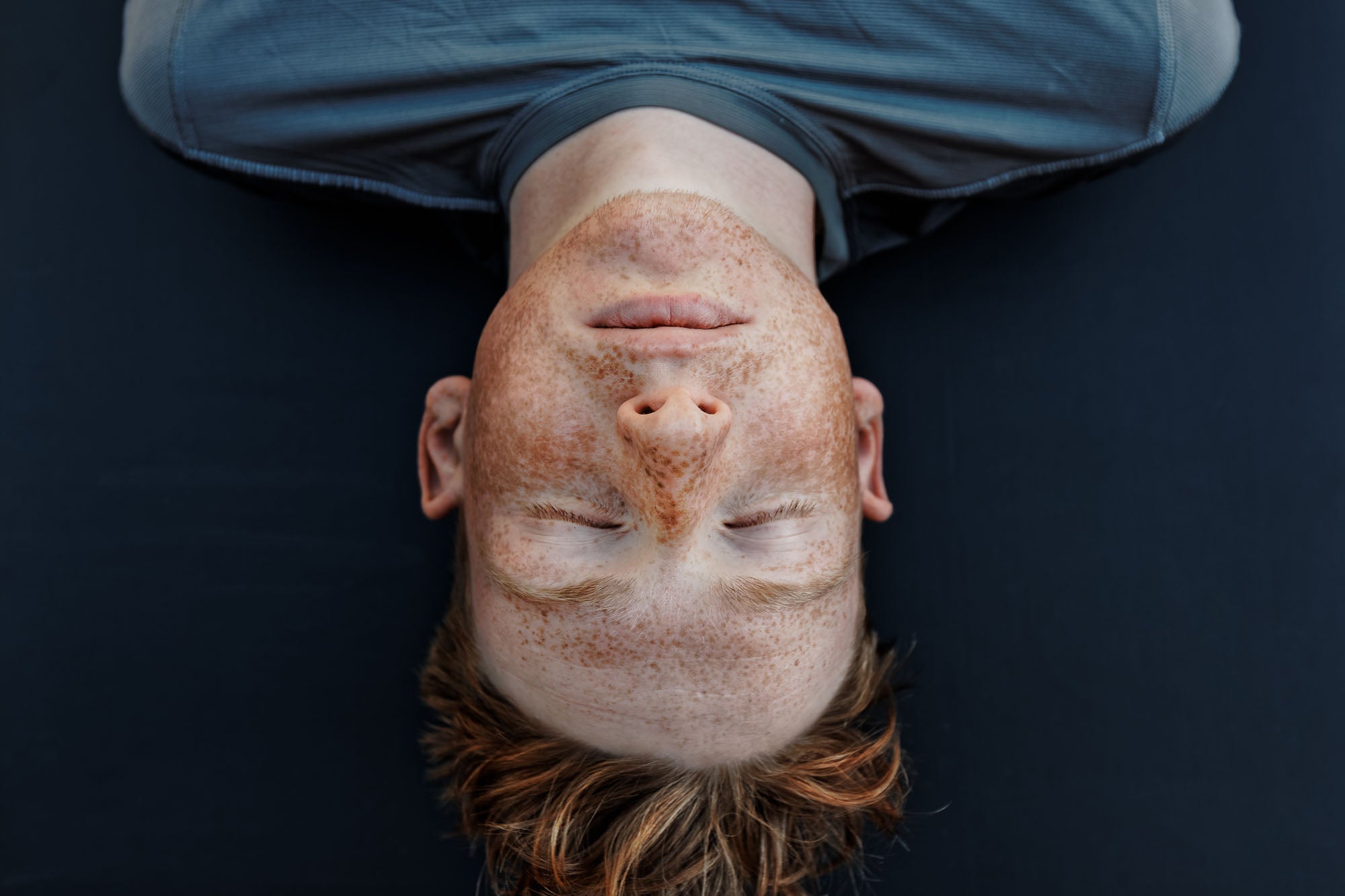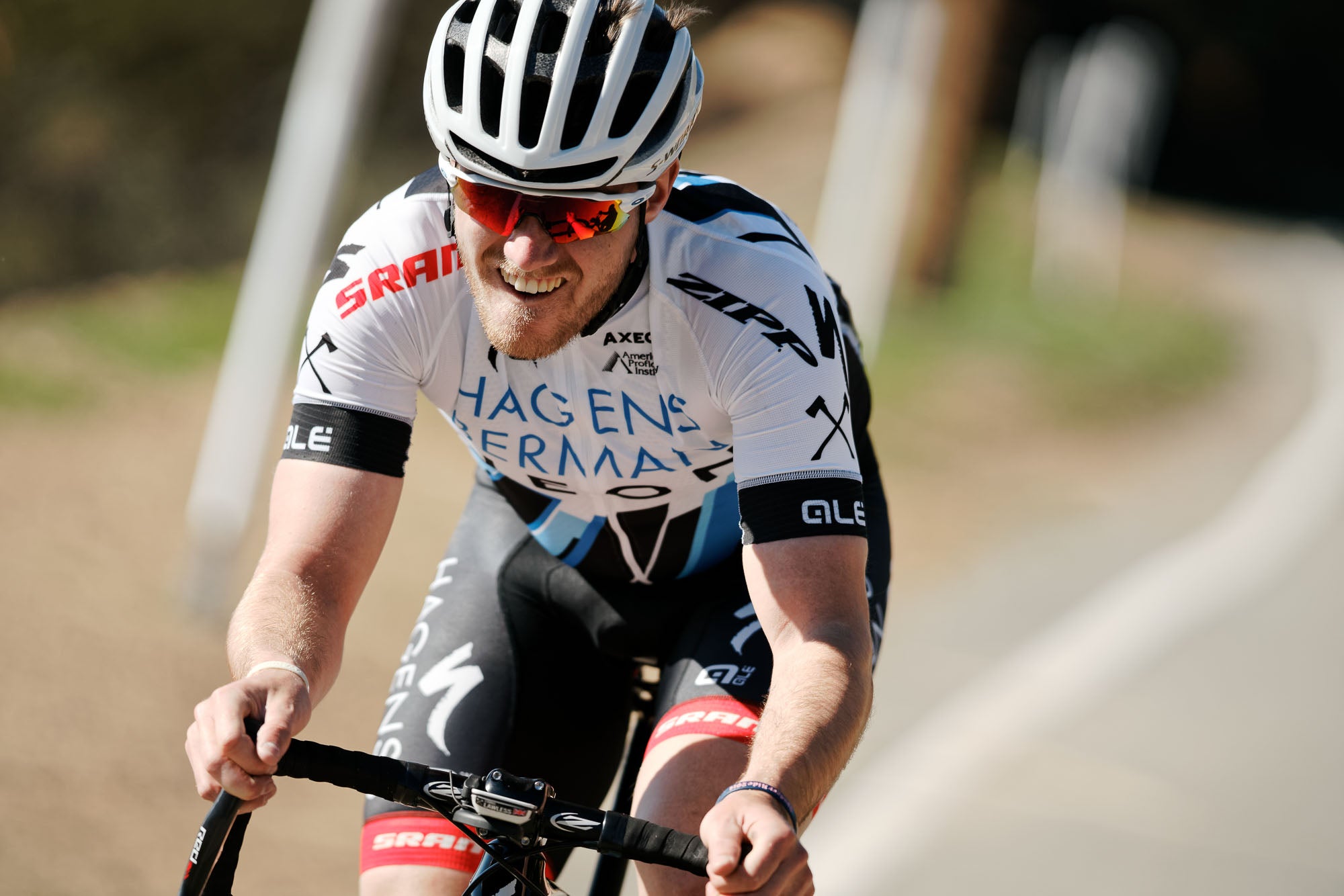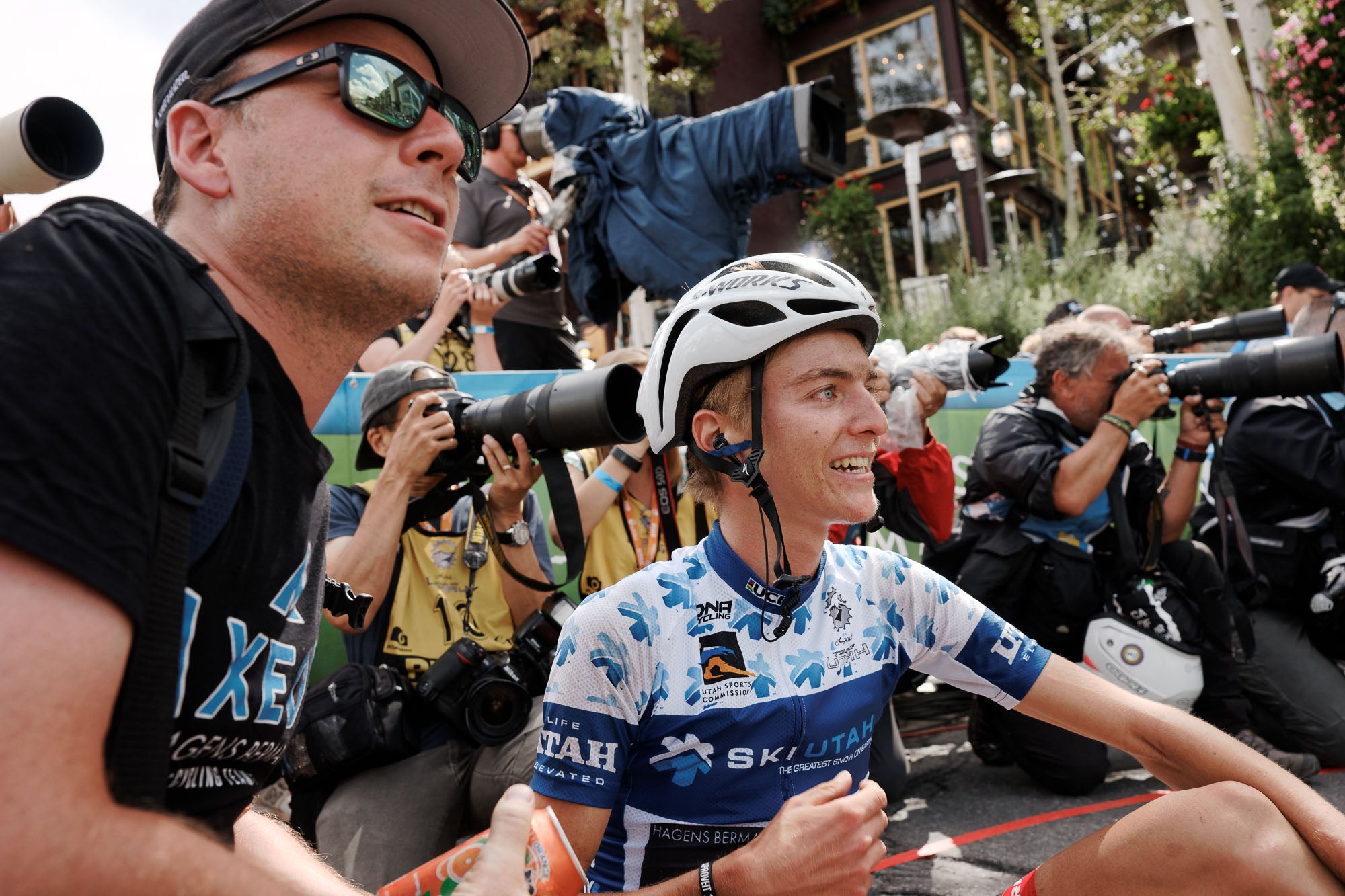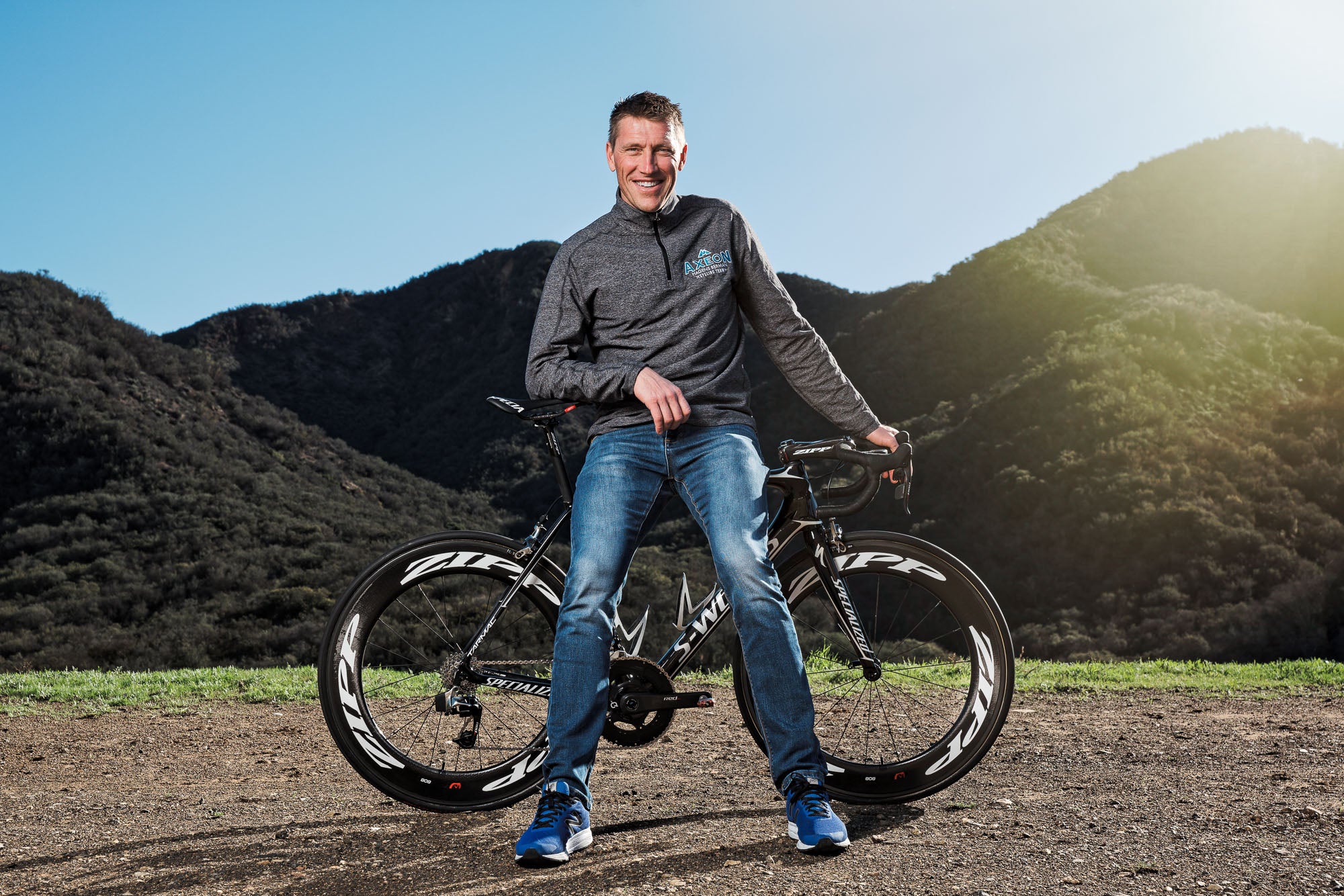There’s an old saying that work begets work. The idea being that the more you do, the more opportunities will come your way. That’s certainly proven true for commercial sports photographer Davey Wilson.
A former New Yorker, Wilson now lives in Utah. He relocated there a year ago to better serve clients like cycling team Axeon Hagens Berman. Run by Axel Merckx, son of the greatest road cyclist of all time, Eddy Merckx, and a champion road racer in his own right, the team is one of the best on the UCI Continental circuit, a developmental league for young riders under the age of 23. It is the last stop on their way to the world tour. These athletes go on to race in the Tour de France and become household names the world over—sometimes even in the U.S. And they hire Wilson to document every aspect of the cycling life.
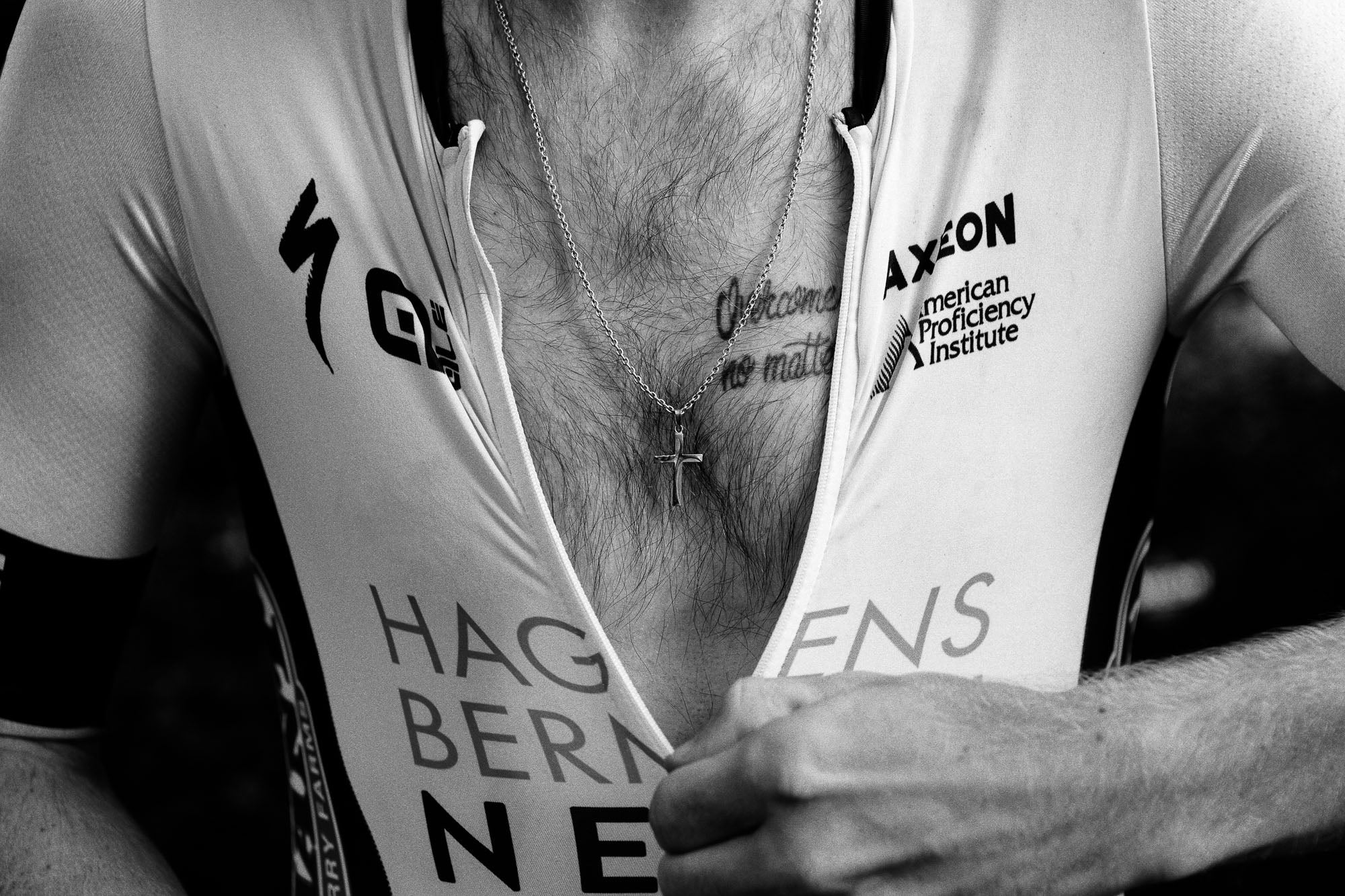
Making The Deal
Early in his career Wilson photographed for the music industry. A marketing contact there moved on to a new gig in the cycling world, and after seeing Wilson’s shots of hip hop artist A$AP Rocky, he wanted to hire the photographer to do something similar. One good gig led to another.
“He was a huge hip hop fan,” Wilson says, “and he said, ‘Man, can you shoot my cycling team? I want it to look like this?’ And I was like, ‘what!’ I respect the sport and all, but I thought, ‘what am I going to do with this?’ A lot of photographers that teams tend to hire for sports are guys who used to play the sport themselves and they’re a huge fan and then they pick up the camera and they call themselves a photographer and that’s who you get. They didn’t want that. They wanted someone who knew how to make people look epic and bigger than what they are. Kind of seeing people for what they can be, not what they are.”
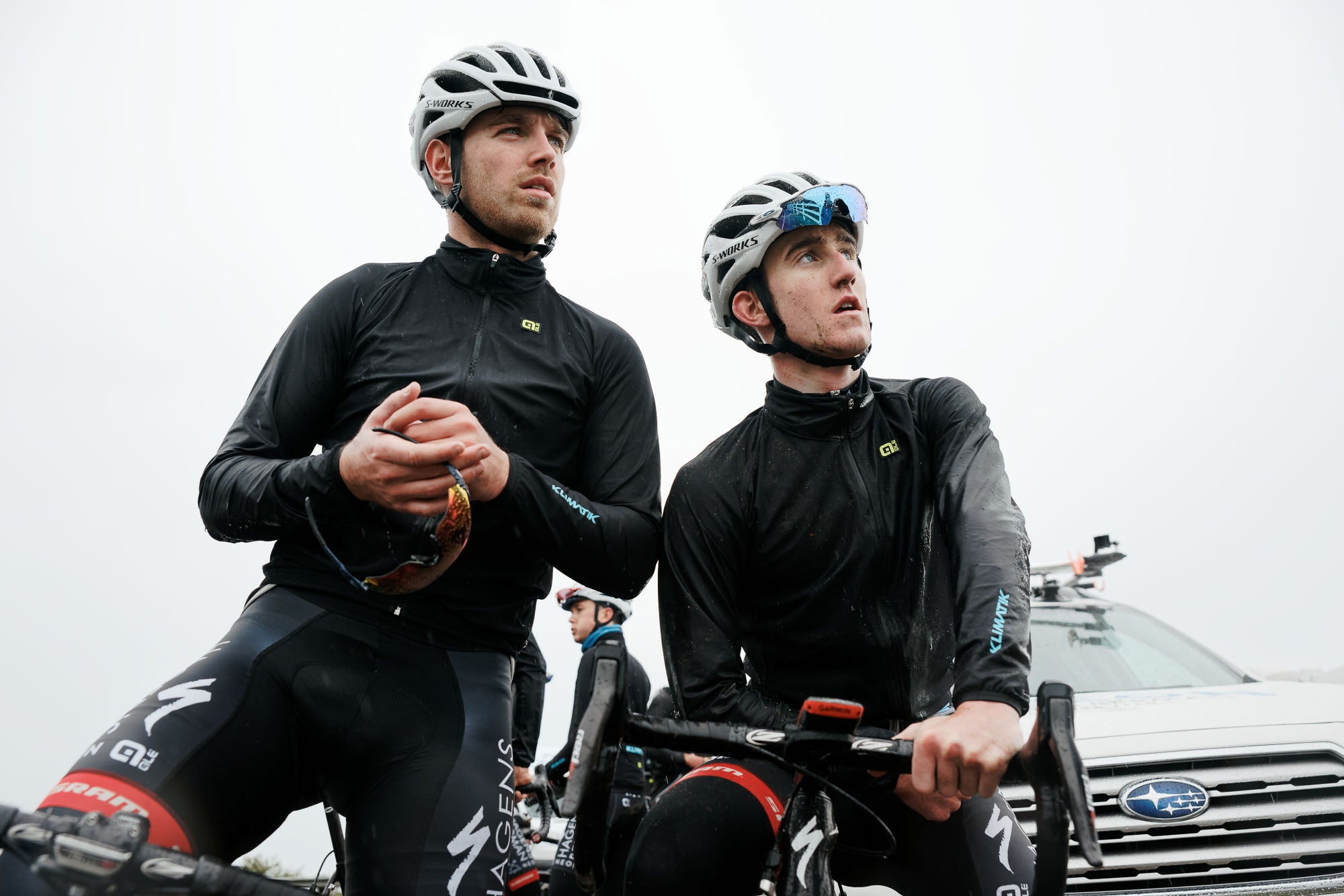
That was in 2015. The team obviously loved what Wilson produced as they’ve had him back every season since. His assignment starts each January with training camp, then he rejoins the team later in the spring as the season really gets underway. He photographs everything from athletes in training to race day action, studio portraits for marketing materials and behind the scenes for social media. Wilson is able to flex his creative muscle with a variety of photographic disciplines, and book several shoot days each year for a single client. It’s an ideal relationship, owed largely to the relationships Wilson cultivated while serving past customers. It’s proof that if you consistently exceed expectations you might earn yourself a lifelong client.
“Every job you do,” Wilson says, “you have to have the talent to back it up. But a lot of it also is your relationships. It’s not just my relationship with the team director it’s my relationship with the athletes. If you can’t relate with those kids it’s not going to work out so well. I never take it for granted for a second, and I always feel like every job I go into, I care so much about my work that I treat every assignment like it could be my last. Even to this day I always just really feel like you have to—especially these days, with how competitive it is—if you don’t care about it, get out of the business. Save it for someone who does.”
Wilson’s initial foray into cycling photography was largely new territory, he wasn’t naïve about photographing sports. He had already established himself as an exceptional, if only occasional, photographer of soccer and rugby.
“Man, I’ve done so many different things,” he says. “I shot a campaign for Unilever and Degree Men, the deodorant, around the last World Cup. That was a cool thing to work on, but… yeah, I had not shot cycling when I joined Axeon. This was all new to me. I picked it up really fast. And you know, it came really natural to me. If I didn’t do well they wouldn’t have had me come back.”
It’s a testament to Wilson’s skill as a photographer that he was able to thrive right off the bat.
“I think that’s why they wanted me to begin with,” he says. “They wanted someone to see the whole picture and not just look at these little technical things. They didn’t want the same thing, from that fan perspective. They wanted someone to come in and make everything look good. I don’t just shoot the races for them, I shoot all their marketing images as well. That’s a whole other thing. If you go on their website all their portraits are shot by me, all the studio stuff, everything. Even on the merch store, it’s everything that they can think of send to me. It's awesome.”
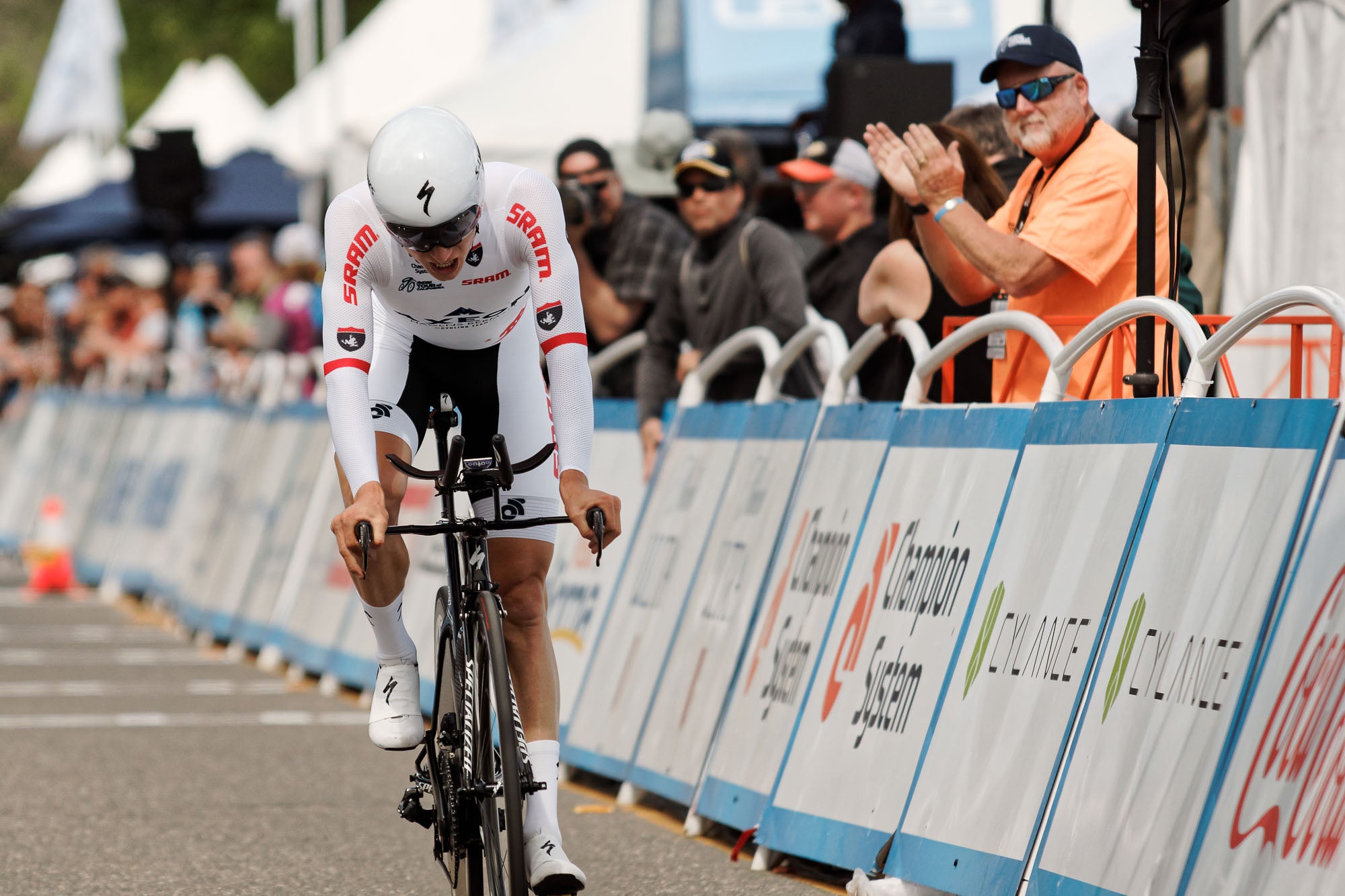
“I’ve found cycling to be one of the hardest sports to shoot but equally rewarding,” Wilson continues, “The combination of speed and proximity while often not being positioned exactly where you want to be due to logistical restrictions all present challenges to overcome, but nothing beats it when you get that shot. My focus with the team is more behind the scenes, but I also have to get action as well.
“My coverage is either at training camps or on the different tours that they do. Usually I’m there a day or two before the race starts and then I leave the day after. So, my average day may be waking up at 5:00 a.m., it’s crazy on these tours. You’re out there, you go to the guys’ rooms, see if they’re getting set up, or you meet them at breakfast. I also have to make sure the photos from yesterday are ready to be posted on social media. They deliver some to press, we have a press officer as well who deals with the media. So they’re always coming to me. It’s such a rush, we’ll do that and then we’ll go to the start.
The night before we’ve usually found a midway point. And if the midway point is really epic, if it’s a really big KOM [mountain climb], or with a lot of fans for interaction or something like that that’s really visual, sometimes we’ll skip the start and go straight to that midway point and then leave the midway point and then rush to the finish. It really depends on the day. But it’s cool because the difference between being a team photographer and just being a sports photojournalist is I have complete, unrestricted, all access. Literally, you feel like [you’re part of the team]. You capture so much personality, so much story.”
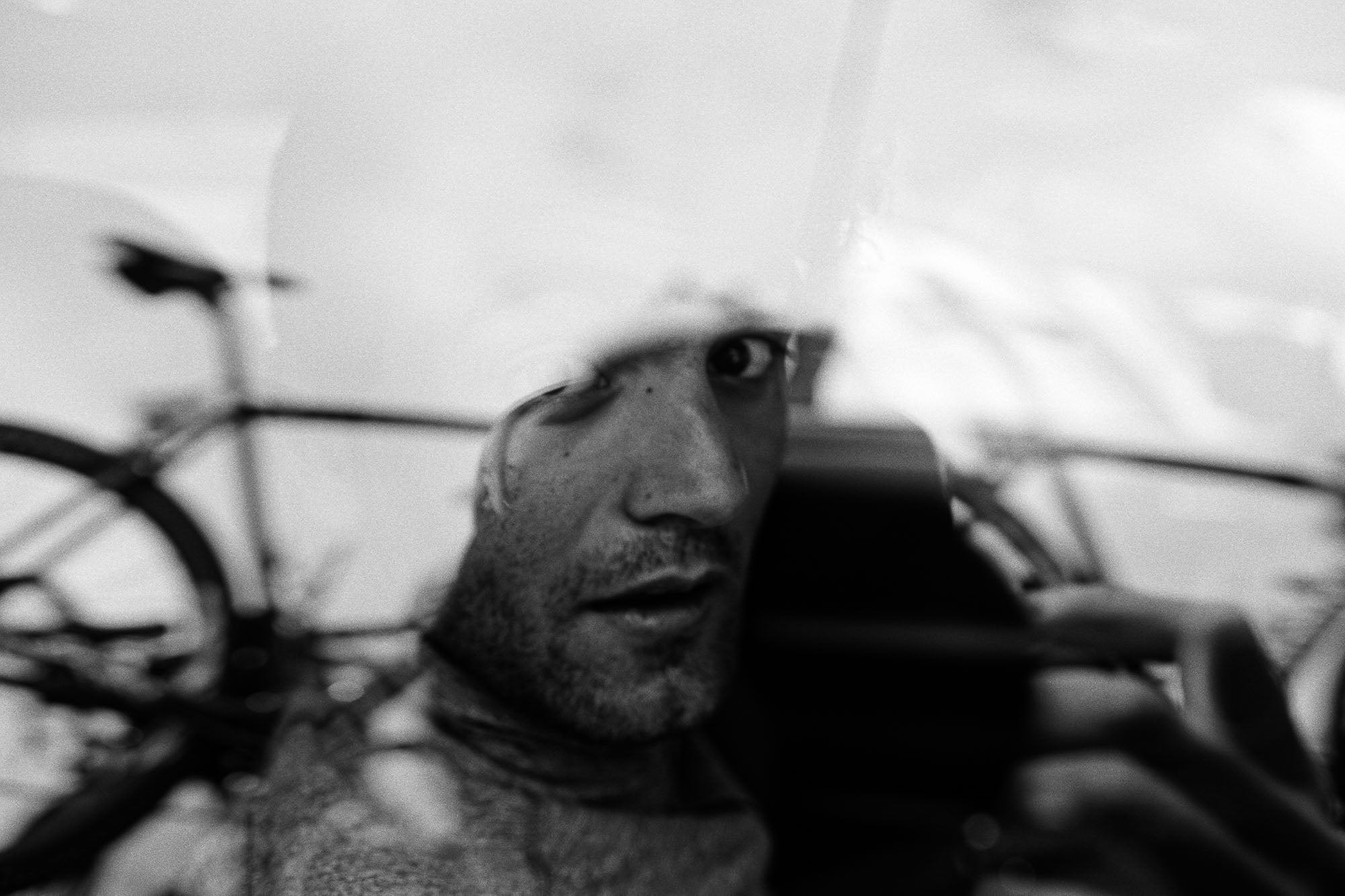
The Business Side
Wilson is meticulous when it comes to the business side of photography. He crosses every “T” and dots every “I” in his contracts, and he negotiates based on the client’s usage starting with the initial conversation.
“When booking a shoot for a major brand,” he says, “the first thing I ask is what rights they need for the images. We always start with a time—do you want 12 months, 24 months, how long will you really use the images and where? That’s where the conversation absolutely should start. That’s where you determine your licensing fee. Some photographers now are actually lumping licensing, pre-production, production day, post production and equipment into one flat creative fee. But what happens is the clients are asking themselves, ‘Why am I paying you $10,000 for a day of work?’ or whatever. I feel like it still makes more sense to break everything down and when I bill my clients for greater transparency and to keep it honest. I bill for my time, production days, I look at how much post there’s going to be and add that up. If there was scouting or extensive planning beforehand I factor in pre-production time. I have to bill for all the equipment used on the shoot because it’s part of the overhead.”
“I think some people get nervous,” he says. “I feel like artists are especially sensitive people and we don’t want to be perceived like we’re trying to rip people off. And we’re not, but it’s all too easy to sell ourselves short. I didn’t have a clue about the business side of photography at the beginning and am definitely guilty of such. When I started out, I was living in Brooklyn with an art director at Blender, who went on to be Creative Director at Wired, and he always gave the best advice. Looking at one of my invoices, he said, ‘Day rate looks standard, but where’s equipment on here? You need to bill for everything, from camera to memory cards, your laptop – everything! If you don’t know how much to charge, just look at what the rental houses are billing for day rates on your equipment as a starting point, add it up and put something on there or you’re never going to survive!’”
Wilson insists. “He was right, and made a great point. Equipment creates a huge amount of overhead that photographers often forget to factor in. It’s not just the expense of buying, but also maintaining and repairing, and each job creates wear and tear. A reasonable client shouldn’t balk, especially if it’s a commercial job. If it’s a short soccer match you’re going to charge less, but you should make sure your rate is high enough to factor in time & overhead. I grew up in England where they don’t really use the word rent, they say hire. Remember when clients hire you for a job, they’re hiring a photographer and the full package that comes with it, and if you’re not billing for part of that package, you’re giving it away at your loss.”

Talking about copyright and fees is difficult for many photographers, which is specifically why Wilson wants to talk about it. He knows a lot of pros and aspiring pros need the help. “Copyright is so important because the value of images generally increases over time,” he explains, “and they can be published & re-used in more ways than you can count.” “With Axeon, I retain ownership of my images,” Wilson says. “Which is awesome. I know working in sports can sometimes be a horrible deal for the photographer. That kind of reminds me of the way the music industry was going, which is what kind of turned me off from doing those shoots.
I think [Axeon’s team directors] respect me as much as I respect them and we genuinely want each other to succeed. That’s kind of the mentality. With Axeon, a lot of my photos later turn into ads for brands that work with us. That’s kind of cool. And that’s part of why our deal is set the way it is, because we want to both benefit from our work together. We’re a team.”
The Gear
The tools Wilson chooses to tell his stories, both for studio work and for shooting race action from the back of a motorbike, is the Sony α99 II. The full-frame SLT (Single Lens Translucent) camera is super-fast, super-accurate and offers Wilson unprecedented image quality in a user-friendly package.
“I am all Sony,” he says. “I’ve been with Sony for a long time. A photographer I lived with in New York, back when I had a crappy little DSLR and I wanted to buy something else recommended getting the α900. When that came out it was the highest resolution full-frame camera. He told me to buy it because of the Zeiss lenses, the autofocus Zeiss glass in particular. That’s just such a huge thing. The lenses are so important.
“Now I use the α99 II and its image quality has me jumping out of my skin! I can’t believe it. There are features in this thing I didn’t even think of. It has variable priority white balance to help me deal with shooting in mixed-source lighting, all these little features like that. It’s really, really good.”
“When I first got my α99,” Wilson says, “I left it in the box for a month because of the electronic viewfinder. Normally I’m an early adopter with stuff, but I was kind of nervous about it. And then I started using it and it completely changed my life as a photographer. Now I have two α99 IIs and the A-mount 300mm f/2.8 G2, 24-70mm Zeiss f/2.8 ZA II, 70-200mm G II and for portraits the Zeiss 85mm f/1.4. The 300 f/2.8 is probably my favorite lens in the Sony system. I love that lens.”
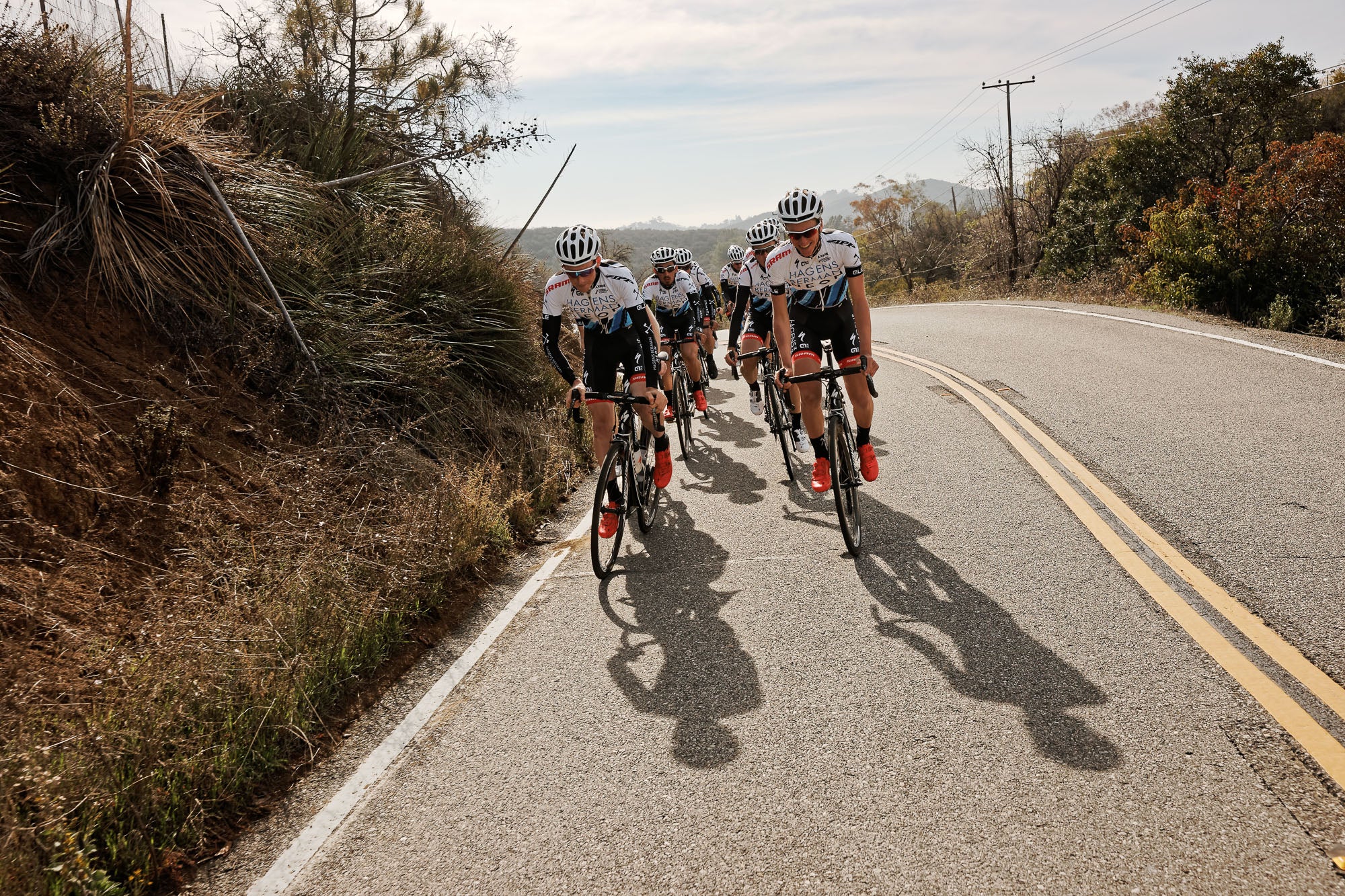
Shooting Technique & Style
Wilson’s portfolio demonstrates what a knack he has for making beautiful imagery in challenging lighting situations such as direct midday sun. Not a lot of commercial photographers would be confident about making natural light images in the middle of the afternoon. Wilson employs his own unique post-processing regimen, but he says his aesthetic success most definitely begins at the moment of exposure.
“Do you know what other photographers say to me when they see my work?” he asks. “They always talk about my levels. And like how everything looks so smooth and the dynamic range. I’m just meticulous with exposures. There’s a really great book I found early on that completely changed the way I work, Perfect Exposure by Michael Freeman. He really shows you how to see the whole frame in terms of levels, so you know when to override the camera’s multi-zone metering—to be sure, I have to use that too as a sports photographer sometimes—but I often override via spot metering and lock my exposure.”
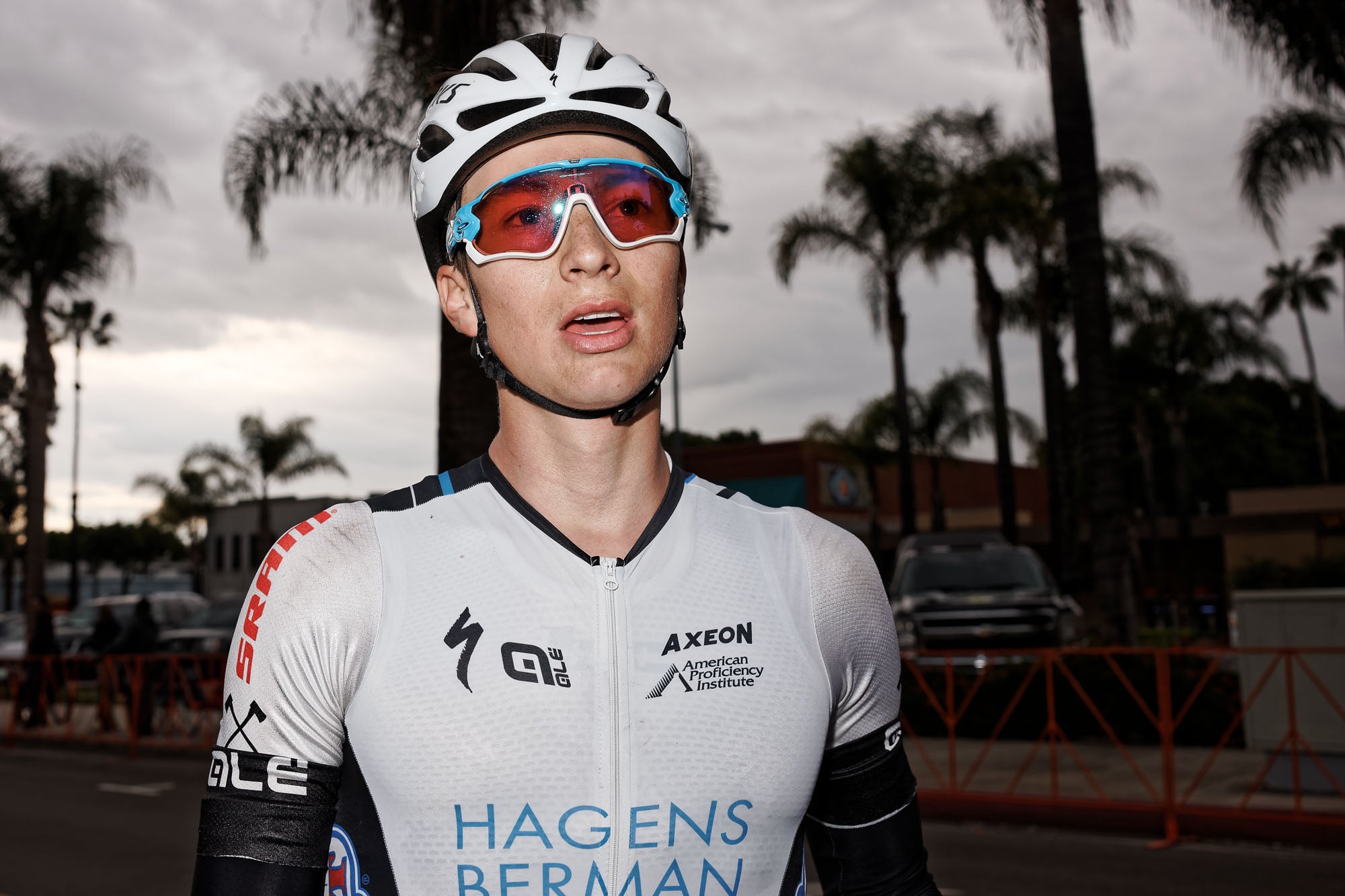
Wilson perfects his images with what he calls “a tiny bit” of post-production. “I use DxO Optics Pro,” he says. “I have for about ten years and on the new version they have this new spot weighted mode which finds the face in the photo and then optimizes the exposure for your subject, accordingly. So it even further perfects it, but if you look at my photos straight out of the camera and what gets sent out after processing, there’s barely a difference.
"I tell people I like to get it there in camera because the turnaround time shooting for Axeon is so fast. I’m starting at 5:00 in the morning and the race may be done at 3:00 p.m. or 4:00 p.m. They want that one photo to put up on social media immediately. Then I have to have another edit done. I may shoot 1,000 photos a day and they want them edited down to 36 or 50 photos delivered by the end of that day so they can get them up in the morning. That’s a very fast turnaround. You can’t do that if you have to spend a lot of time adjusting exposures in the computer.”
“I do use a proprietary color shift,” Wilson says. “It’s a bit desaturated, just a little bit filmic, but I don’t want it to look like some insta-faded old photo thing. I hate that stuff. What I do is just a slight shift that makes it mine. After years of use, I’ve gotten my workflow to the point that photos come in and that color shift is applied instantly. Then all I’ve got to do is fine tune exposures if I need to, and adjust my curves slightly. If it’s a low light image I may adjust the noise reduction slightly and that’s about it.” It's proof that simple is often the most powerful.
Follow Davey Wilson on Instagram @daveywilson
